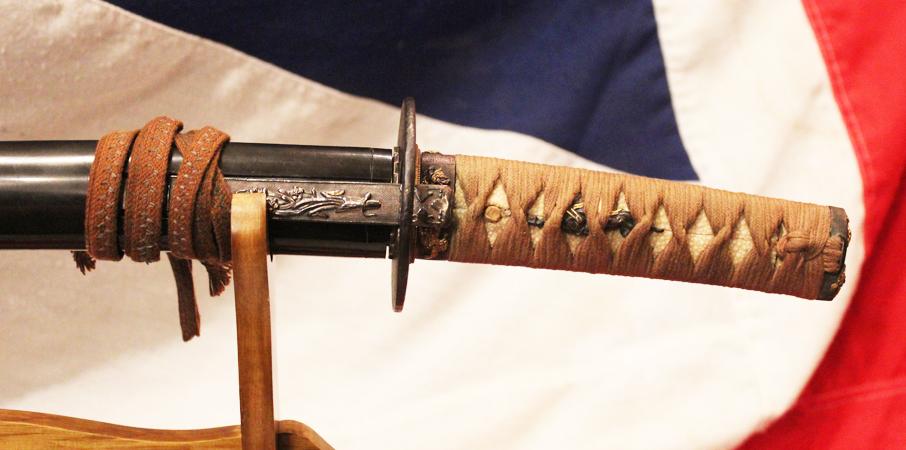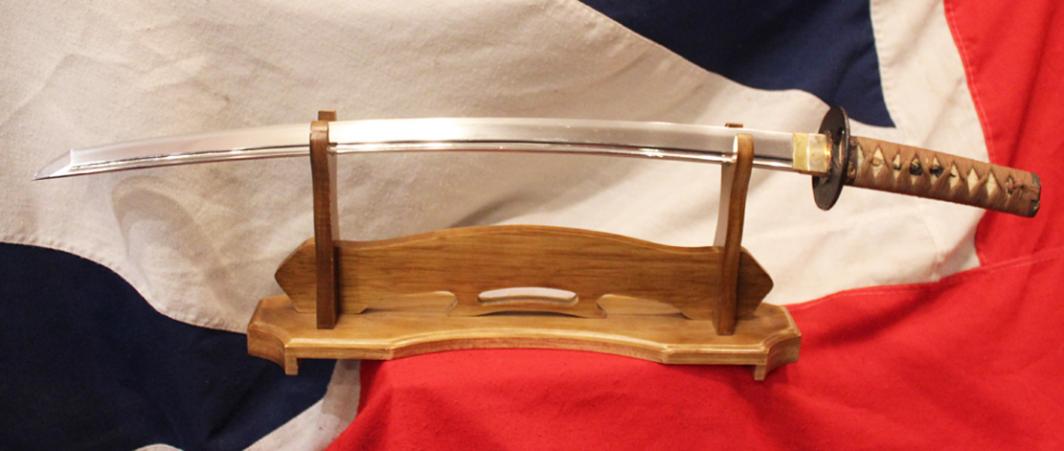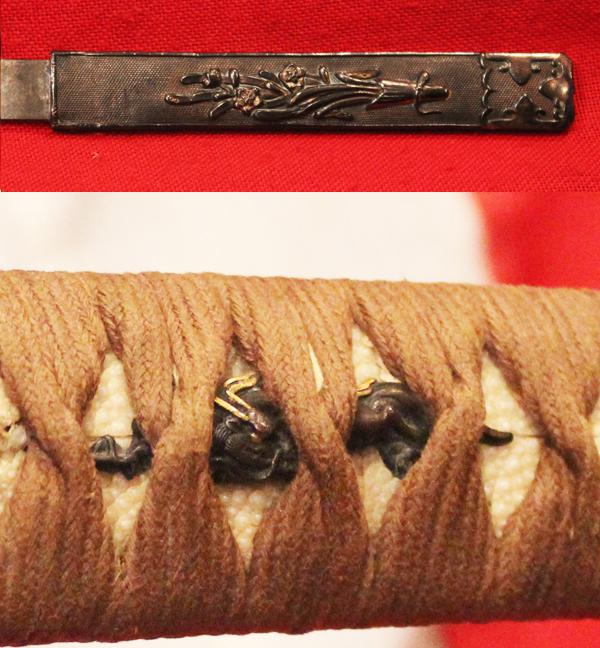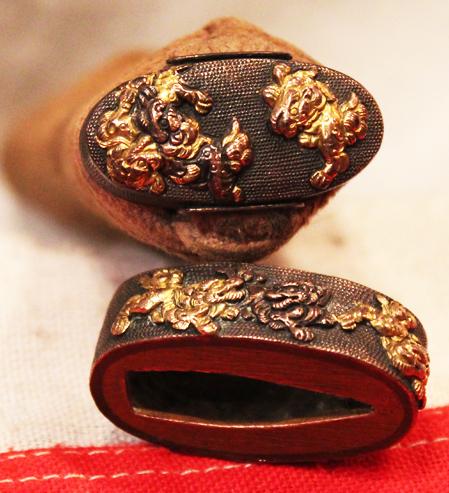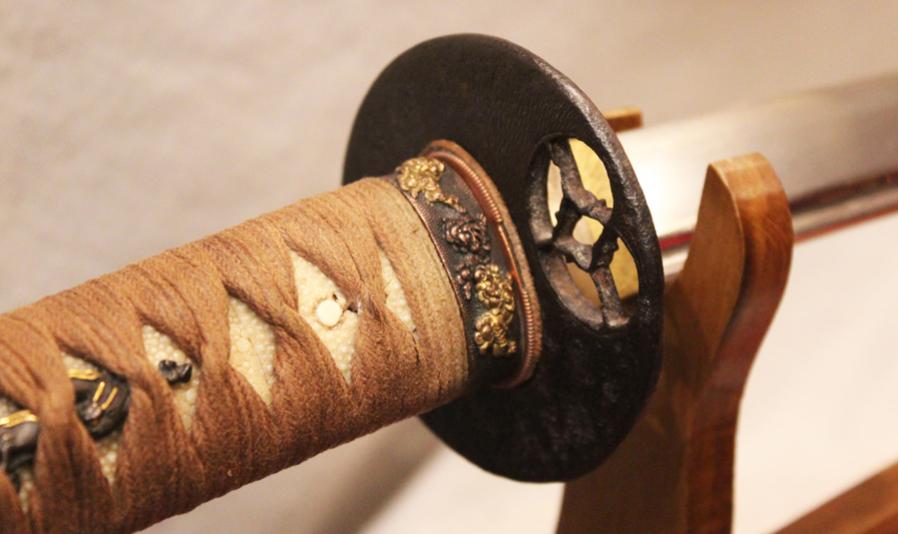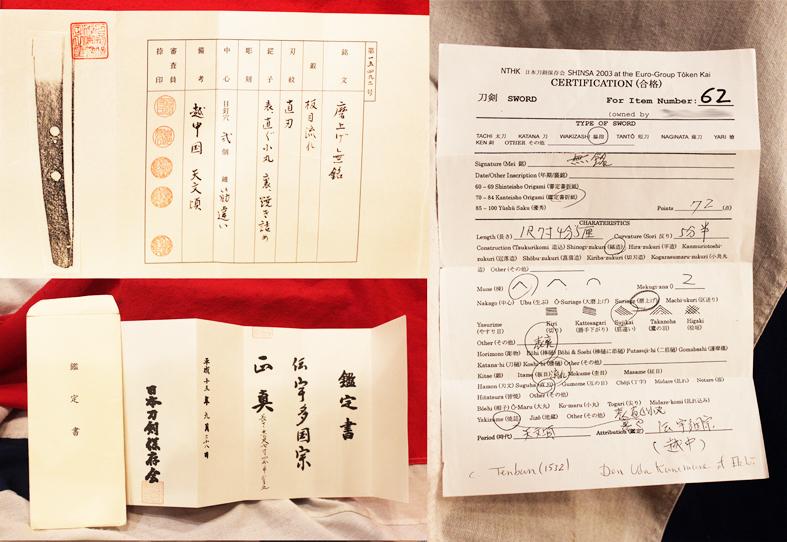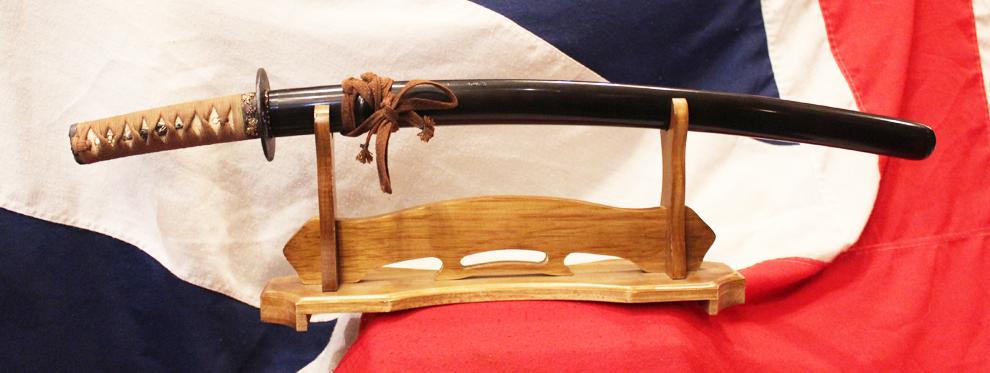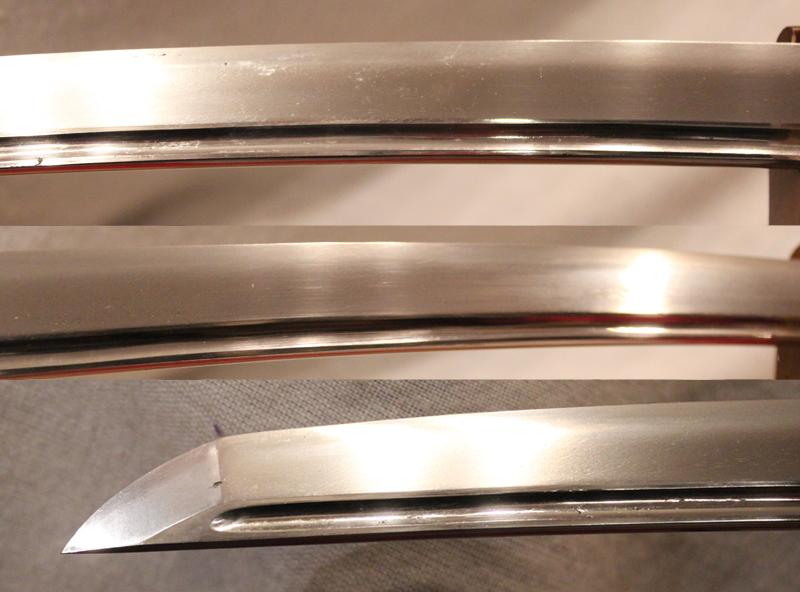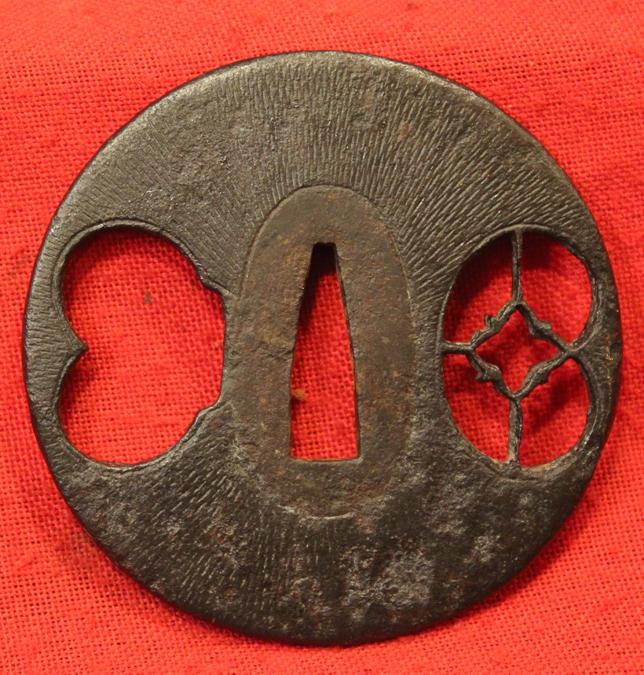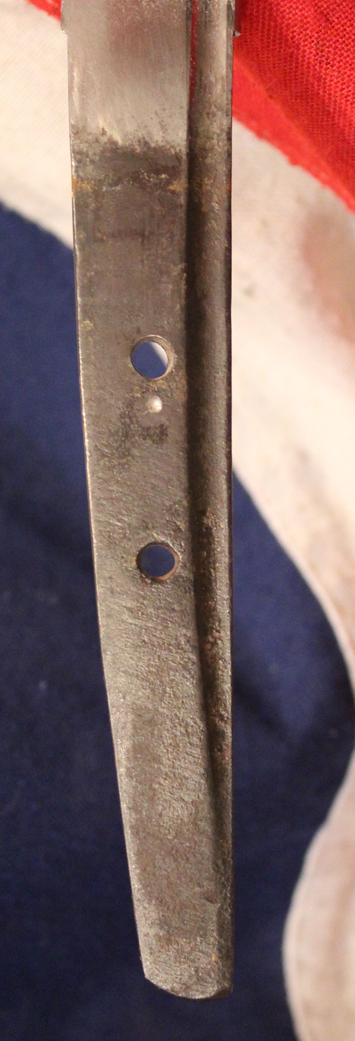A Most Attractive Koto Wakizashi Attributed to Kanemune of Etchu, 1532 WIth Japanese Attribution Papers
Uda school blade with bo hi to both sides. Fine sugaha hamon with mokume hada. Edo period Goto school mounts in shakudo patinated copper and gold depicting carved shi shi lion dogs. Menuki of shakudo and gold dragons. Iron Edo tsuba of fan formed windows, with Amidayasuri. NTHK certificated in 2003 as attributed to Kanemune of Etchu by a previous owner. The founder of the Uda School is considered to have been Kunimitsu. He was originally from the Uda district of Yamato Province. He worked around the Bunpo Era or 1317 at the end of the Kamakura Era. All of the succeeding smiths of this school used the kanji character â"Kuni", in their signatures. At some point he moved to Etchu Province so even though the Uda School had its foundation in the Yamato tradition, it is considered to be one of the wakimono schools from this region together with such schools as he Fujishima and Chiyozuru. Together these three schools are often referred to as the kita kuni mono.
Since remaining works by Kunimitsu are non-existent, his students, Kunifusa and Kunimune, are generally thought to be the true founders of this school. Both of these smiths studied under Norishige of the Etchu Province and they were active around the Koan Era (1361). The works of these early Uda smiths followed the style of the Yamato Den particularly in the areas of sugata and hamon. We rarely have swords with papers for our swords mostly came to England in the 1870's long before 'papers' were invented, and they have never returned to Japan for inspection and papers to be issued. However, on occasion we acquire swords from latter day collectors that have had swords papered in the past 30 years or so. this is one of those. It is important to bear in mind, that due to the revered status that Japanese swords achieve for most of their working lives in Japan, that the condition they survive in can be simply remarkable. One can see just how remarkable it can be, by comparing the condition of this fine sword that was made around the same time as the early Tudor period of King Henry the VIIIth to any equivalent aged, surviving, early Tudor period sword, from any country outside of Japan, and that comparison will show just how fine any Japanese sword’s state of preservation, from the same era, truly can be.
28 inches long overall in saya, 21.5 inch long blade tip to tsuba.
Code: 23596
4950.00 GBP

